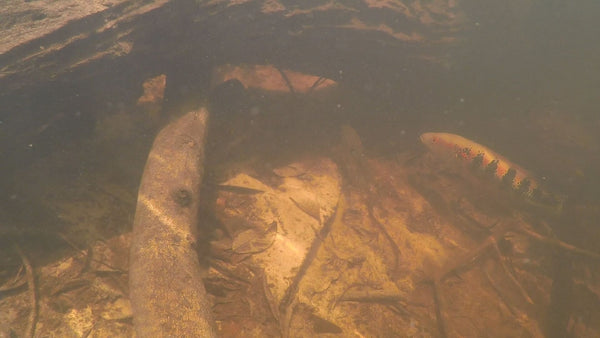- Continue Shopping
- Your Cart is Empty
Quick starts. Smart starts...and the long game...

Things are really humming along here in "Botanical Land!"
Every week, we see aquarists playing around with botanical-influenced blackwater aquariums for the first time, and in an insanely high percentage of cases, they are enthralled by this new realm. We hear many of the same types of descriptions used to describe the total experience of this type of aquarium, and how it changed their perception of what a "natural aquarium" really is.

Most important of all is the excitement we're feeling from those who are just getting underway with their botanical aquariums...you know, playing with them for the first time, eager and excited to see what this is all about. And a lot of hobbyists are not 100% certain what the best way to start a botanical-style/blackwater aquarium.
I mean, it can be as simple as, "Just throw the stuff i there and wait..."
However, I think there is a bit more to the process than that, really.

Getting underway with botanicals is a really interesting topic that I could easily devote several blogs to. I think that the initial consideration with botanicals is to have some sort of "plan" going in. I mean, sure, it's fine to toss a few into an existing tank to "see what they'll do"; however, it's far better to have a goal or plan for the tank.

In other words, your goal is to replicate a shallow blackwater Borneo stream and you want to assemble some palm-derived materials to simulate it. Or, you're starting from scratch and want to do an Amazonian igarape, complete with tons of leaves. No matter how broad or nebulous the idea is, at least you have something to work with.
Having a plan, no matter how basic, will at least give you a "track to run on" when stocking the aquarium with botanicals. And the way you start will really "set the tone" for your display throughout its lifetime. And of course, adding lots of botanical materials into an existing, established, populated aquarium can rapidly change the environmental parameters of the system and affect the fishes residing in there, so you need to keep this in mind when "retrofitting" a tank.

When starting from scratch, I usually will "deploy" about 90% of the amount of materials that I ultimately intend to use, right from the start. This does a couple of things. First, it "lays down" the initial environmentally-influencing botanical spread and creates the basic aesthetic you want. Second, it gives you an opportunity to assess what kind of environmental influence the botanicals create. You let the system run at "90%" for a week or two, and then "edit", as I like to call it, and add the rest of the materials that you feel get you where you want to be initially.

Then you wait for two or three weeks.
Yep, I like to wait until stuff starts "softening", breaking down a bit; acquiring a "patina" of biofilm or algae and starts looking less "pristine"; more natural and "rich."

Then I do more "editing", adding a few botanicals or leaves here and there as I feel necessary to get the look and "structure" I want for the display. Just sort of "evolving" it a bit; all the while, keeping in mind that the system will change on it's own without any intervention on your part. It will "get where it's going" on its own time. Adding a few botanicals or leaves along the way is simply what you do to keep the process going. And it's extremely analogous to what happens in nature, as new materials fall into waterways throughout the year, while existing materials are carried off by currents or decompose completely.
Yeah, just like nature.

We're going to revisit the topic of "getting started" more often here, following what are turning into "best practices" and tips to get your botanical-style/blackwater aquarium off to a good start. We'll cover everything fro selecting ones that can help you achieve what you're trying to do, to the ongoing debate on the best way to prepare them, to learning about the environmental impact of the botanicals on your aquarium, and how the overall aquarium environment "evolved" in such an aquarium.
So much to cover, based on what we know. So much yet to learn. It's a long game.
Glad to have you along for the ride.
Stay excited. Stay focused. Stay creative. Stay adventurous.
And Stay Wet!
Scott Fellman
Tannin Aquatis









Scott Fellman
Author